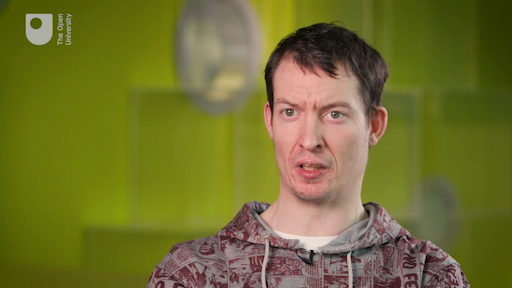1 Being labelled
You will start by listening to a number of people with learning disabilities talking about their experiences of being labelled as having a learning disability.
Activity _unit2.1.1 Activity 1 Labels
Watch this video clip of Shaun, Cian, Dayo and Phil talking about the labels that are used about them and other people with learning disabilities. How do people with a learning disability understand and make sense of these labels?
As you watch the film, make notes on:
- the different labels that people mention (there are 18 of these);
- whether they chose these labels, or if they were imposed by others;
- how and why some labels become terms of abuse.

Transcript: Video 2
Discussion
Did you find all these labels?
Spastic, retard, imbecile, special needs, learning disability, mentally defective, mentally deficient, mentally challenged, autistic, weird, cheeky, trouble-maker, service-user, a learning-disabled person, mongoloid, learning difficulties, feeble-minded, disabled.
No one chose their label. Shaun quite liked ‘cheeky’ and ‘trouble-maker’, two labels which could apply to anyone, not just someone with a learning disability.
The memory of his sister Bernie being called ‘mongoloid’ by the hospital was clearly upsetting for Phil.
- Cian explained that when the label is first used it is often not meant to be rude. But over time, even quite innocent sounding labels like ‘special needs’ become terms of abuse.
This very first activity has introduced one of the most controversial issues in learning disabilities, that of the words to use. This course has chosen to use the term ‘learning disability’, as opposed to others like ‘intellectual disability’ or ‘learning difficulties’. Some people believe that one of the reasons labels change so frequently is to escape the stigma that accompanies learning disability. But as Cian said, it hasn’t worked!
Later in this session you will look at the pros and cons of labelling. But first, some definitions.
